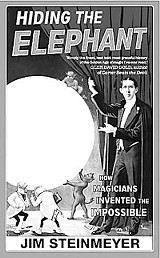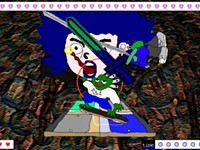Fiz - 11.23.05
[
{
"name": "500x250 Ad",
"insertPoint": "5",
"component": "15667920",
"parentWrapperClass": "",
"requiredCountToDisplay": "1"
}
]
The design of magic
Magicians make good copy. They do stuff that no one else can or wants to. They perform, leading lives filled with illusion, deception, and hares.
During the '70s, Doug Henning represented magic in American popular culture. He was at the forefront of a new generation reinvigorating the mysterious arts. Many other magicians had appeared on television, but none had the same loopy charm, copious hair, and remarkable technical skill --- or the ability and desire to construct illusions not often seen at the time.
Henning knew, like all professional magicians, that he did not have to develop all the tricks himself. Among others, he hired Jim Steinmeyer. Henning ran his course as a magician and yogic flyer, but Steinmeyer remained in the magic scene, or rather behind it. Make no mistake, great magic design is difficult --- as anyone who has seen the latest spate of Blaine-inspired levitations can attest. As opposed to all those card forces and coin palms that fill magic books, stage magic is a relatively recent manifestation. And it requires imagination. It has a design.
While pursuing his day job working with Siegfried and Roy, David Copperfield, Lance Burton, and Ricky Jay, Steinmeyer has also been producing outstanding small press books on the theory of magic: Art & Artifice, Device and Illusion, The Complete Jarrett, etc. For the less hard-core reader, Steinmeyer has been producing incredibly readable books on magic history, with just enough revelation mixed in to keep things spicy. His first was Hiding the Elephant, documenting 19th-century magical attempts to exploit the technological advances of the day. Recently, Steinmeyer has produced The Glorious Deception: the Double Life of William Robinson, aka Chung Ling Soo, the 'Marvelous Chinese Conjurer'. Keep your eyes peeled for the part played by Rochester in magic history.
--- Craig Brownlie



